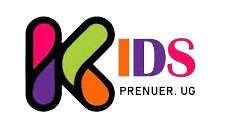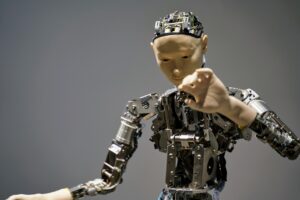Course Overview:
The Basic Programming for Robotics course introduces students to the foundational concepts of robotics programming, covering both block-based and code-based programming approaches. This course is designed to equip learners with essential programming skills for controlling and directing robots, helping students develop problem-solving, critical thinking, and logical reasoning abilities. Through hands-on practice, students will learn to program a robot to follow commands, perform movements, and complete simple tasks using beginner-friendly coding platforms like Scratch, Blockly, and Arduino IDE.
By the end of this course, students can create simple programs to guide a robot’s actions, such as moving forward, turning, and stopping. They will gain a practical understanding of programming structures and experience the real-world applications of robotics in technology and engineering.
Introduction Lesson: What is Robotics Programming?
Lesson Notes:
- What is Robotics?
Robotics involves designing, building, and programming machines (robots) that can perform tasks automatically. In the real world, robots are widely used in manufacturing, healthcare, transportation, and even home cleaning (e.g., robotic vacuum cleaners). Robotics brings together multiple fields, including mechanical engineering, electrical engineering, and computer science. - Why Learn Robotics Programming?
Learning to program robots helps students develop skills in logical thinking, problem-solving, and creativity. Robotics is also an important field in technology, with robots being used to automate repetitive tasks, perform dangerous jobs, and assist in everyday tasks. Understanding robotics programming can open career pathways in STEM (science, technology, engineering, and mathematics). - Introduction to Programming Robots:
Programming is the process of giving a robot instructions on what to do. It’s like writing a recipe for a robot, where each step tells the robot exactly what to do. In robotics programming, you give commands to a robot, which it then follows to perform tasks like moving forward, turning, or stopping. - Real-World Examples of Robotics Applications:
- Manufacturing: Factories use robotic arms to assemble products like cars and electronics with precision and speed.
- Healthcare: Medical robots help with surgeries and assist patients in hospitals.
- Home Automation: Robots like Roombas (vacuum cleaners) help clean floors automatically.
- Delivery Services: Some companies use robots to deliver food and packages to customers.
Requirements
- Robotics kits (LEGO Mindstorms, Arduino, or similar)
- Basic electronic components (motors, sensors, wires)
- Access to a computer for programming and coding
Features
- Hands-on learning with robot-building and programming.
- Introduction to robotics hardware and components.
- Learn to program robots to perform tasks using block-based or code-based systems.
- Team-based challenges to encourage collaboration and creativity.
- Final robot showcase and competition.
Target audiences
- Children aged 9-18 with an interest in engineering, technology, and problem-solving. Prior experience in programming or robotics is not required but will be helpful.

